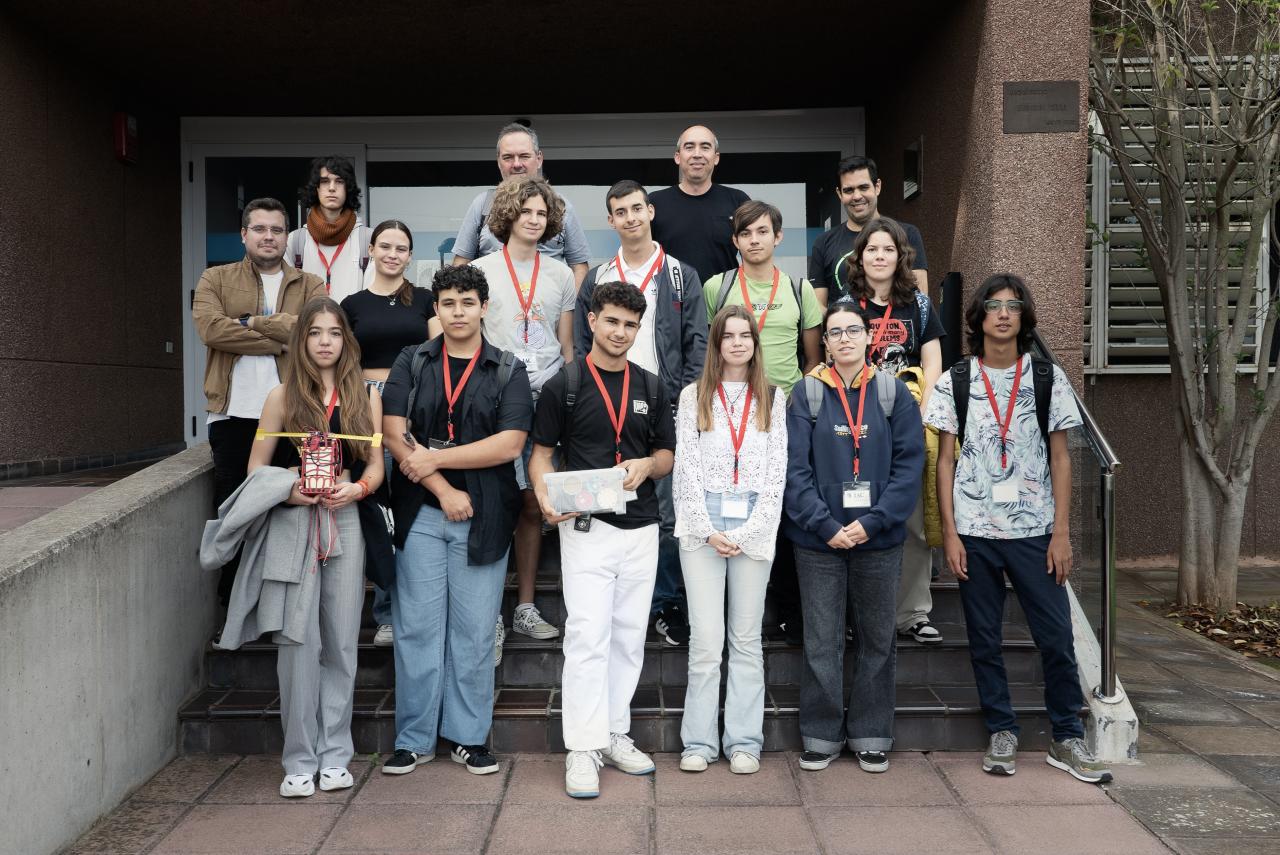Students from IES Viera y Clavijo participating in the CANSAT programme of the European Space Agency (ESA) visited the facilities of the Institute of Astrophysics of the Canary Islands (IAC) as part of the training activities they are carrying out together with their teachers.
The CANSAT programme is part of a European-level training programme organised by the ESA in which students are challenged to build and launch a mini satellite the size of a soda can inside a rocket or drone.
When it reaches a height of more than one kilometre, the mini satellite is dropped, equipped with a parachute, to carry out a series of mandatory experiments and another proposed by the team. To reach the European final, students must overcome the different competitions held at regional and national level.
"The students make a great effort to acquire the knowledge and skills to be able to develop all the main subsystems found in a satellite, such as energy, sensors and a communication system, so that they fit within a very small space," says Leonardo Ruiz Hernández, the teacher who is responsible for the IES Viera and Clavijo team.
Lucía Sicilia Mora, an engineering student at the Universidad de La Laguna who is doing her curricular internship at the IAC, comments: "I had the opportunity to participate in the CANSAT programme during my time at IES Viera and Clavijo, and it was an incredible experience that greatly influenced my choice of an engineering degree."
During the visit, the students were able to see the facilities of the IAC Instrumentation Area and, in particular, learn about the activities carried out in the Integrated Circuits Laboratory (LABIC) of the Electronics Department of the Instrumentation Area. The students were able to see and understand how integrated circuits are designed and tested. "One of the things that most caught the attention of the students was the high level of integration that integrated circuits possess, or in other words, the high number of electronic components that can be placed inside a chip, which, in the particular case of the one they saw, is 2 mm long by 2 mm wide," says Hugo García Vázquez, who is in charge of the LABIC laboratory.
Luis Fernando Rodríguez Ramos, Head of the Electronics Department, also comments "that collaborating with other research and training centres is part of the IAC's DNA, as reflected in the activities that are carried out and in the number of students who come to do internships from different academic levels." The IAC has been supporting and collaborating with this team for several years through different activities.
We at the IAC offer them our support and wish them the best of luck in this edition of CANSAT.
MORE INFORMATION
IES Viera y Clavijo website:
https://www3.gobiernodecanarias.org/medusa/edublog/iesvierayclavijo/
CANSAT Spain website:
LABIC website:
